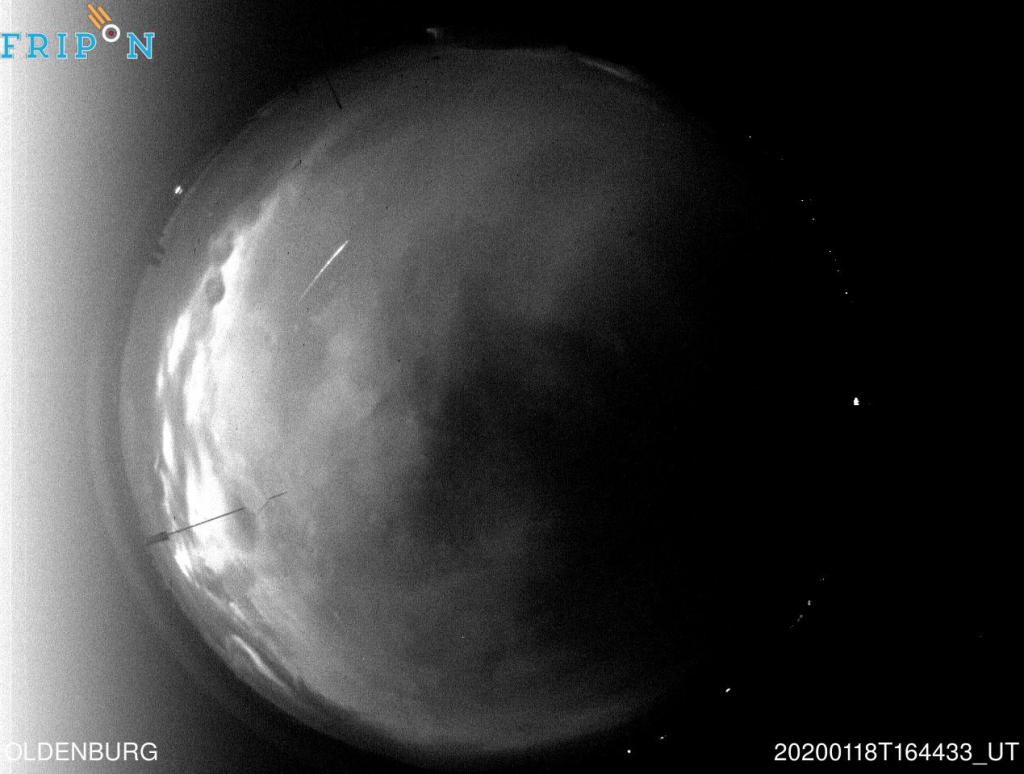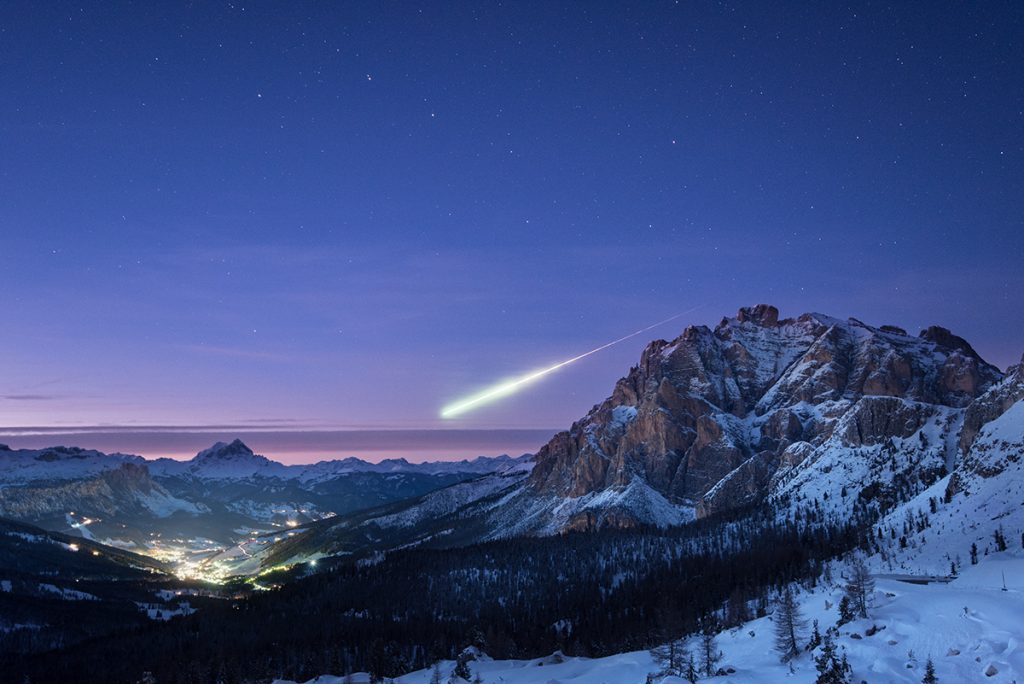Help find a meteorite?
On 18 January 2020 at 16:44 UTC (17:44 local time), two fireball cameras in ESA’s FRIPON camera network spotted a stream of light in the skies above northwestern Germany. The trajectory of the ball of fire suggests a small meteorite could have landed in the vicinity of Oldenburg.

Fireballs are caused as small asteroids strike Earth’s atmosphere, entirely or almost entirely burning up due to friction, and appearing in the sky brighter than the planet Venus.

The object that impacted Earth on this occasion is estimated to have been just 10-40 cm in diameter, before it entered the atmosphere. The observed fireball flew in a south to north direction, west of the German city of Cloppenburg and heading towards the nearby city of Friesoythe.
It is possible that one, or even several small pieces survived the journey through our protective atmosphere and reached the ground as meteorites. Such meteorites however will be just a few grams in mass and difficult to find.
Were you in the region?
If you spotted the event, you can report it directly to the International Meteor Organization using the form available at vsw.imo.net, or send an email to the space environment group at the University of Oldenburg, via björn.poppe@uol.de or gerhard.drolshagen@uol.de. (If you think you have found a meteorite, Björn and Gerhard would also love to hear about it!).
FRIPON fireball network
The FRIPON network consists of 150 fisheye cameras working together to plot the course of meteorites entering Europe’s skies, supporting efforts to retrieve fresh-fallen meteorites for study. It started in France, lead by the IMCCE-Paris Observatory, MNHN-National History Museum and GEOPS-Paris Sud University. Data are stored and processed at OSU-Pyheas-Marseille.
On this occasion, two cameras spotted the speedy fireball, one located at the Cosmos Sterrenwacht observatory in the Netherlands, and the other at the University of Oldenburg in Germany.
Finding NEMO
The detection and analysis of fireball events like this is also part of the NEMO (NEar real-time impact MOnitoring) project. NEMO aims to provide information on objects hitting Earth’s atmosphere becoming bright fireballs, using data gathered via social media reports across Europe and worldwide, as well as observations from the FRIPON fireball network.
Only a few days ago, a test version of the software was installed at ESA’s mission control and operations centre in the Space Safety Office.
from Rocket Science https://ift.tt/3aCgrvQ
v
Help find a meteorite?
On 18 January 2020 at 16:44 UTC (17:44 local time), two fireball cameras in ESA’s FRIPON camera network spotted a stream of light in the skies above northwestern Germany. The trajectory of the ball of fire suggests a small meteorite could have landed in the vicinity of Oldenburg.

Fireballs are caused as small asteroids strike Earth’s atmosphere, entirely or almost entirely burning up due to friction, and appearing in the sky brighter than the planet Venus.

The object that impacted Earth on this occasion is estimated to have been just 10-40 cm in diameter, before it entered the atmosphere. The observed fireball flew in a south to north direction, west of the German city of Cloppenburg and heading towards the nearby city of Friesoythe.
It is possible that one, or even several small pieces survived the journey through our protective atmosphere and reached the ground as meteorites. Such meteorites however will be just a few grams in mass and difficult to find.
Were you in the region?
If you spotted the event, you can report it directly to the International Meteor Organization using the form available at vsw.imo.net, or send an email to the space environment group at the University of Oldenburg, via björn.poppe@uol.de or gerhard.drolshagen@uol.de. (If you think you have found a meteorite, Björn and Gerhard would also love to hear about it!).
FRIPON fireball network
The FRIPON network consists of 150 fisheye cameras working together to plot the course of meteorites entering Europe’s skies, supporting efforts to retrieve fresh-fallen meteorites for study. It started in France, lead by the IMCCE-Paris Observatory, MNHN-National History Museum and GEOPS-Paris Sud University. Data are stored and processed at OSU-Pyheas-Marseille.
On this occasion, two cameras spotted the speedy fireball, one located at the Cosmos Sterrenwacht observatory in the Netherlands, and the other at the University of Oldenburg in Germany.
Finding NEMO
The detection and analysis of fireball events like this is also part of the NEMO (NEar real-time impact MOnitoring) project. NEMO aims to provide information on objects hitting Earth’s atmosphere becoming bright fireballs, using data gathered via social media reports across Europe and worldwide, as well as observations from the FRIPON fireball network.
Only a few days ago, a test version of the software was installed at ESA’s mission control and operations centre in the Space Safety Office.
from Rocket Science https://ift.tt/3aCgrvQ
v


 :
: 
Aucun commentaire:
Enregistrer un commentaire